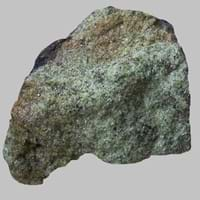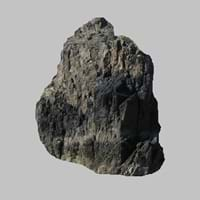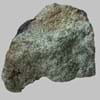Definition
Lherzolite is a type of ultramafic igneous rock which contains essential olivine and clinopyroxene and orthopyroxene in equal proportions
Cataclasite is a type of cataclastic rock that is formed by fracturing and comminution during faulting. It is normally cohesive and non-foliated, consisting of angular clasts in a finer-grained matrix
Origin
France
Swiss Alps, Europe
Discoverer
Unknown
Michael Tellinger
Etymology
From the Lherz Massif, an alpine peridotite complex, at Étang de Lers, near Massat in the French Pyrenees; Lherz is the archaic spelling of this location
From the Italian word cataclasi
Class
Igneous Rocks
Metamorphic Rocks
Sub-Class
Durable Rock, Hard Rock
Durable Rock, Medium Hardness Rock
Group
Plutonic
Not Applicable
Other Categories
Fine Grained Rock, Opaque Rock
Fine Grained Rock, Opaque Rock
Color
Black, Dark Greenish - Grey, Green, Pink, Purple
Brown, Green, White, Yellow
Durability
Durable
Durable
Appearance
Glassy, Vesicular and Foilated
Dull and Banded
Interior Uses
Decorative Aggregates, Entryways, Homes, Interior Decoration
Decorative Aggregates, Homes
Exterior Uses
As Building Stone, As Facing Stone, Office Buildings
As Building Stone, As Facing Stone, Paving Stone
Other Architectural Uses
Curbing
Curbing
Construction Industry
Landscaping, Manufacture of Magnesium and Dolomite Refractories, Used for flooring, stair treads, borders and window sills.
As Dimension Stone, Building houses or walls, Cement Manufacture, Construction Aggregate, for Road Aggregate
Medical Industry
Not Yet Used
Not Yet Used
Antiquity Uses
Artifacts, Sculpture
Artifacts
Commercial Uses
As armour rock for sea walls, Source of Magnesia (MgO), Used in aquariums
Commemorative Tablets, Creating Artwork
Types
Garnet Lherzolite
Protocataclasite, Mesocataclasite, Ultracataclasite and Foliated cataclasite
Features
Host Rock for Lead
Easily splits into thin plates, Is one of the oldest rock
Archaeological Significance
Monuments
Not Yet Used
Not Yet Used
Famous Monuments
Not Applicable
Not Applicable
Sculpture
Used
Not Yet Used
Famous Sculptures
Data Not Available
Not Applicable
Pictographs
Not Used
Used
Petroglyphs
Not Used
Used
Figurines
Used
Not Yet Used
Formation
Lherzolite is a fine-grained, hard rock which is a type of metasomatite, essentially altered basalt. It forms with or without crystallization, either below the surface as intrusive rocks or on the surface as extrusive rocks.
Cataclasiste rocks mainly form by pressure deep under the Earth's surface, from the extreme heat caused by magma or by the intense collisions and friction of tectonic plates.
Mineral Content
Harzburgite, Olivine, Pyroxene, Pyrrhotite
Albite, Apatite, Augite, Biotite, Calcite, Enstatite, Epidote, Feldspar, Micas, Muscovite or Illite, Pyroxene, Quartz
Compound Content
CaO, Cr, Chromium(III) Oxide, MgO
Silicon Dioxide
Types of Metamorphism
Cataclastic Metamorphism, Contact Metamorphism
Not Applicable
Types of Weathering
Biological Weathering, Chemical Weathering, Mechanical Weathering
Mechanical Weathering
Types of Erosion
Chemical Erosion, Water Erosion, Wind Erosion
Coastal Erosion, Wind Erosion
Grain Size
Fine Grained
Fine Grained
Porosity
Less Porous
Less Porous
Luster
Subvitreous to Dull
Vitreous
Compressive Strength
Not Available
Cleavage
Perfect
Not Available
Toughness
2.7
Not Available
Specific Gravity
2.86
2.1
Transparency
Opaque
Translucent to Opaque
Density
2.8-2.9 g/cm3
2.9-3.1 g/cm3
Specific Heat Capacity
Not Available
Resistance
Heat Resistant, Impact Resistant, Pressure Resistant, Wear Resistant
Heat Resistant, Impact Resistant, Pressure Resistant
Deposits in Eastern Continents
Asia
Russia, South Korea
China, India, Russia, Saudi Arabia, South Korea
Africa
Western Africa
Egypt, Ethiopia, Kenya, Madagascar, Morocco, South Africa
Europe
United Kingdom
England, Finland, France, Spain, United Kingdom
Others
Not Yet Found
Not Yet Found
Deposits in Western Continents
North America
USA
Canada, USA
South America
Not Yet Found
Argentina, Colombia
Deposits in Oceania Continent
Australia
Central Australia, Western Australia
Central Australia, Western Australia
Lherzolite vs Cataclasite Characteristics
Though some rocks look identical, they have certain characteristics which distinguish them from others. Characteristics of rocks include texture, appearance, color, fracture, streak, hardness etc. Lherzolite vs Cataclasite characteristics assist us to distinguish and recognize rocks. Also you can check about Properties of Lherzolite and Properties of Cataclasite. Learn more about Lherzolite vs Cataclasite in the next section. The interior uses of Lherzolite include Decorative aggregates, Entryways, Homes and Interior decoration whereas the interior uses of Cataclasite include Decorative aggregates and Homes. Due to some exceptional properties of Lherzolite and Cataclasite, they have various applications in construction industry. The uses of Lherzolite in construction industry include Landscaping, Manufacture of magnesium and dolomite refractories, Used for flooring, stair treads, borders and window sills. and that of Cataclasite include As dimension stone, Building houses or walls, Cement manufacture, Construction aggregate, For road aggregate.
More about Lherzolite and Cataclasite
Here you can know more about Lherzolite and Cataclasite. The life cycle of a rock consists of formation of rock, composition of rock and transformation of rock. The composition of Lherzolite and Cataclasite consists of mineral content and compound content. The mineral content of Lherzolite includes Harzburgite, Olivine, Pyroxene, Pyrrhotite and mineral content of Cataclasite includes Albite, Apatite, Augite, Biotite, Calcite, Enstatite, Epidote, Feldspar, Micas, Muscovite or Illite, Pyroxene, Quartz. You can also check out the list of all . When we have to compare Lherzolite vs Cataclasite, the texture, color and appearance plays an important role in determining the type of rock. Lherzolite is available in black, dark greenish - grey, green, pink, purple colors whereas, Cataclasite is available in brown, green, white, yellow colors. Appearance of Lherzolite is Glassy, Vesicular and Foilated and that of Cataclasite is Dull and Banded. Properties of rock is another aspect for Lherzolite vs Cataclasite. The hardness of Lherzolite is 6.5 and that of Cataclasite is 3-4. The types of Lherzolite are Garnet Lherzolite whereas types of Cataclasite are Protocataclasite, Mesocataclasite, Ultracataclasite and Foliated cataclasite. Streak of rock is the color of powder produced when it is dragged across an unweathered surface. The streak of Lherzolite is white while that of Cataclasite is black. The specific heat capacity of Lherzolite is 0.95 kJ/Kg K and that of Cataclasite is Not Available. Depending on the properties like hardness, toughness, specific heat capacity, porosity etc., rocks are resistant to heat, wear, impact, etc.Lherzolite is heat resistant, impact resistant, pressure resistant, wear resistant whereas Cataclasite is heat resistant, impact resistant, pressure resistant.





